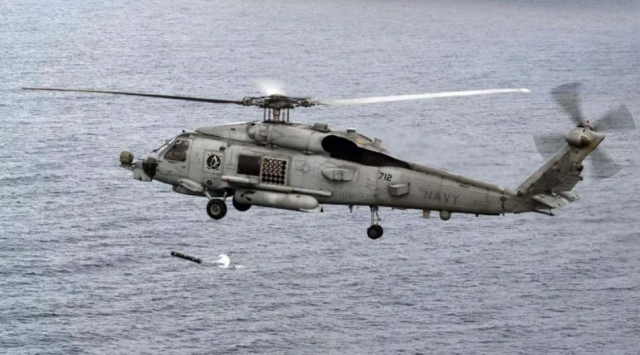US Navy Anti-submarine Warfare (ASW) gets a boost
After loosing a true dedicated submarine hunter embedded in a US Navy Carrier Air Wing CVW), the US Navy is now facing a new hunter. With the retirement of the S-3B Viking, the USN lost its last Anti-submarine Warfare (ASW) aircraft and a loyal member in the CVW. From that moment, the carrier was mainly relying on H-60 Seahawks with sonar dipping installations, and the P-3C Orion and its successor the P-8 Poseidon. Both P-3 and P-8 support carrier operations from land-based locations and go along (when needed) with the heading of the carrier.
The ASW is often reported as one of the US Navy’s most difficult missions. The dipping sonar system of the Seahawk can only detect submarines on relative short range, but modern submarine warfare could result in torpedo launches from hundreds of miles away. The mission requires to search and cover enormous areas. An when a submarine is located, a torpedo that aircraft or helicopters launch to sink submarines need to be dropped relative short distance near the enemy submarine to have any chance of sinking it. So... a Viking type of aircraft, including additional systems that improve the current Seahawk submarine hunting mission, like a Magnetic Anomaly Detection (MAD) system on top of the dipping sonar, is a kind of must-need for the CVW.
Mid-November 2020, CAE has been awarded a subcontract by Lockheed Martin to supply the CAE Magnetic Anomaly Detection-Extended Role (MAD-XR) system for USN MH-60R Seahawk helicopters. The CAE MAD-XR is a highly sensitive magnetometer designed to sense changes in the earth’s magnetic field and is used as a sensor to detect submarines. Lockheed Martin Rotary and Mission Systems is the lead systems integrator for the US Navy’s MH-60R Seahawk, the Navy’s primary anti-submarine and anti-surface warfare helicopter.
Under terms of a Phase 1 contract from the US Navy, Lockheed Martin has responsibility to integrate the CAE MAD-XR into the MH-60R. CAE will provide the MAD-XR system and support Lockheed Martin with non-recurring engineering and integration services. Initially, a total of six MH-60R helicopters will be integrated with the CAE MAD-XR during Phase 1.
“Over the past several years we have conducted several trials with the U.S. Navy to confirm the capabilities of the MAD-XR system on the MH-60R helicopter,” said Thomas M. Kane, director, Naval Helicopter Programmes, Lockheed Martin. “Adding this to the MH-60R’s sensor suite will further advance the capabilities of the Seahawk.”
The CAE MAD-XR is significantly more compact than previous MAD systems with reduced size, weight, and power requirements. This allows the CAE MAD-XR to be extended to smaller platforms such as unmanned aerial systems, helicopters and small fixed-wing aircraft.
Photo (just illustrative): US Navy


